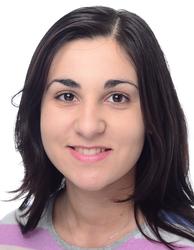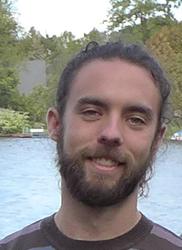URL: https://vffd.desy.de/e25/e309913/index_ger.html
Breadcrumb Navigation
Promotionspreis 2020
Der Promotionspreis wurde am Science Day, am 2. Dezember 2020, verliehen. Er geht zu gleichen Teilen
an Frau Dr. Valeria Botta für ihre Dissertation mit dem Titel
“Measurement of the coupling strength of the Higgs boson to τ leptons with the CMS experiment at the LHC"
und an Herrn Dr. Gregor Loisch für seine Dissertation mit dem Titel
“Demonstrating high transformer ratio bream-driven plasma wakefield acceleration"
Valeria Botta was born in Assisi, Italy, in 1990 and she studied for her bachelor in Perugia and then for her master in Pisa. In 2015 she joined DESY CMS, in the group of Elisabetta Gallo and Alexei Raspereza, working on Higgs physics with the fresh data from Run2 at the LHC, which was just starting.
Valeria immediately started to analyze these new proton proton collisions data, taken at the highest energy of 13 TeV. The goal was to measure the Higgs into tau lepton decays with higher precision than in Run 1, but before that the data had to be understood. Valeria restructured the code and calculated the electron and muon efficiencies for the whole group. She performed the whole analysis chain for two decay channels, working very closely with the other international groups. She gave the so-called pre-approval presentation in front of the Collaboration, which is a big recognition in CMS. In 2017 the paper was published and CMS could claim an observation of 5 sigma for the Higgs into tau leptons decay channel, in CMS alone.
This Higgs into tau analysis is a fundamental milestone in Higgs physics. In 2012 when the ATLAS and CMS announced the Higgs discovery, only the decay into bosons had been observed, but not the one into leptons, i.e. what we call the Yukawa coupling. So this paper of CMS with the observation in the tau channel has been really important.
Valeria was also deeply involved in calibration work for the Collaboration. In 2017 a new pixel detector, to which also DESY contributed, was installed in CMS and Valeria was a key person in the alignment of this detector. Thanks to her excellent work she is now Tracker Alignment convener. Valeria had a small son during her PhD but, in spite of this, she managed to finish her thesis in the 3 years, without any additional delay.
Dr. Gregor Loisch was born in the year 1988 in Offenbach near Frankfurt. He started his
studies in Physics at the Goethe University Frankfurt in 2008. During his study time, he
already had stays abroad at ETH Zürich in Switzerland and at the Pohang Accelerator
Laboratory in South Korea. His master thesis in applied plasma physics was done at the GSI,
the Helmholtz Centre for Heavy Ion Research. Gregor completed his studies in 2015 with a
Master of Science in Physics. In the following year, he moved to DESY in Zeuthen for his
doctorate at the University of Hamburg, and he joined the accelerator research group at
the photo injector test stand Zeuthen, PITZ.
Gregor’s work at DESY took place in the field of beam-driven acceleration of electrons in
plasma waves, the so-called plasma wakefield acceleration. In this scheme, an oscillation
of the plasma electrons is triggered by the space charge forces of a driver-electron bunch
in a plasma acceleration medium. In the differently charged areas of the resulting plasma
wave, subsequent particle bunches can be accelerated with field strengths, which exceed
those in conventional metal-cavity accelerator modules by many orders of magnitude. The
wave transfers energy from the driver bunch to the accelerated particle bunch. The ratio
of the accelerating fields to the decelerating fields, the so-called "transformation ratio",
indicates the maximum energy gain that can be achieved for a certain energy of the driver
bunch. If this ratio is increased, the required length of the pre-accelerator for the driver
beam decreases.
The aim of Gregor's dissertation work was to provide experimental proof that the
transformer ratio in a plasma accelerator can become greater than 2. This value represents
a limit for linear plasma waves for which it was theoretically predicted that surpassing is
only possible under certain conditions. In preparation for the experiments at the PITZ
accelerator, Gregor developed and built a unique plasma cell to provide the acceleration
medium. This cell was adapted to the special experimental conditions at PITZ. He also
applied changes in the setup of the flexible photocathode laser system which then enabled
the generation of the required special longitudinal pulse profiles of the electron bunches.
Furthermore, Gregor developed a new diagnostic method for determining the density of
the used plasma. Only the entity of all these developments allowed him to demonstrate for
the first time an increase in the transformer ratio in a plasma accelerator to 4.6, and thus
well above the linear limit of 2. The methods developed in the framework of his PhD work,
in particular the flexible pulse shaping of the electron bunches, are being considered for
future projects at various accelerator systems worldwide. Achieving high transformer ratios
with simultaneously high energy gain is also the goal of several research projects
worldwide. In order to achieve this, Gregor has contributed an important first step with
the work of his doctoral thesis.





